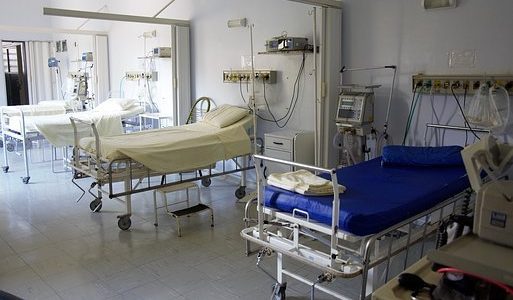The original stay-at-home executive order by North Carolina Gov. Roy Cooper would have ended on Wednesday, April 29.
However, on April 23, Cooper extended the stay-at-home order until May 8. He said I was because, “We need an increase in testing, more testing and we need our trends to be headed in the right direction.”
The executive order Cooper issued on March 27 doesn’t mention testing or trends as the reason to require that North Carolinians stay at home. That order states: “Whereas, hospital administrators and health care providers have expressed concerns that unless the spread of COVID-19 is limited existing health care facilities may be insufficient to care for those who become sick; and
“Whereas, to mitigate community spread of COVID-19 and to reduce the burden on the state’s health care providers and facilities, it is necessary to limit unnecessary person-to-person contact in workplaces and communities;”
There are a bunch more “Whereas” clauses but those two are the ones that concern the reason for the order.
On April 28, a month later, in the entire state according to the North Carolina Department of Health and Human Services (NCDHHS) there are 463 people hospitalized with COVID-19. According to the North Carolina Health Care Association, the state has 3,241 Intensive Care Unit (ICU) beds in operation plus another 273 licensed beds that could be operational in hours.
Which means that all the currently hospitalized COVID-19 patients in the state could be in ICU beds and the state would still have 2,778 ICU beds available for more COVID-19 patients or anyone else who is in need of ICU treatment.
According to the World Health Organization, about 5 percent of patients who develop severe symptoms of COVID-19 and need to be hospitalized end up needing an ICU bed.
If those figures hold true for North Carolina, then of the 463 people currently hospitalized with COVID-19 about 23 will need one of the 3,241 ICU hospital beds available in the state.
Even if the number of people hospitalized with COVID-19 doubled in the next week, which would be completely out of proportion with the rates of increase in the past, that would still only require 46 ICU beds in a state with 3,241 ICU beds.


I long for the good old days of 1968. Camaro’s, Corvettes, Mustang Mach 1’s, Dodge Chargers and Super Bees.
And the Hong Kong flu. It was highly contagious and killed over 100,000 Americans. Finding a vaccine was problematic due to the virus’ ability to mutate so rapidly. And in the face of such challenges, there wasn’t any government mandates to close down businesses and to hide in your home. Nor did the news media raise the ante by spinning fear with the counting of every death.
Wow. Your level of empathy is overwhelming. Certain the Dedicated medical staff, the illl, and their families. Appreciate your sound judgement.
The shelter in place order seems less tenable. The highest risk is in nursing homes and prisons. It’s making less sense to quarantine healthy people. The virus has stirred a lot of fear and a large number of people want to continue shelter in place. For now, it looks like Cooper will use the fear as an excuse to keep moving the goalposts. All in the name of science of course.
Try thinking… Who are you serving? This is not us against them. Healthy Or infected people? You don’t know who they are. Because testing is not being done. Yes, that darn science . Vaccines, cancer treatments, heart transplants, lung machines, ventilators, portable oxygen tanks, CPAP machines, MRI, xrays, antibiotics, lidocaine, who needs it?? Yeah science is our enemy. Who does it serve if you push that falsehood? And the politician tearing down our government , as he holds on to his government job with the best possible health care, benefits etc. Gets paid whether he works or not. Oh yes, he’s your friend. He doesn’t just want your vote so he can live the American Dream .He cares about you, your family & community. Ok. I have a lot of prime land for sale.
Just read that the chairman of the Gaston County Commision signed an order opening the county’s economy at 5 pm today. Will the governor respond? Will other county’s follow suit? Will the General Assembly step in?